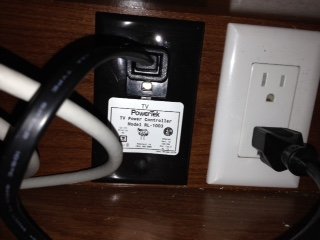Can anyone tell me how to disconnect the power cord on the analog TV. It's not the conventional 2 or 3 pronged cord but has a specially designed plug receptical.
Need to try and hook up an inverter in the overhead cabinets to run sat receiver and TV. Not upgrading to LED TV or new Direct TV receiver just yet.
Need to try and hook up an inverter in the overhead cabinets to run sat receiver and TV. Not upgrading to LED TV or new Direct TV receiver just yet.

